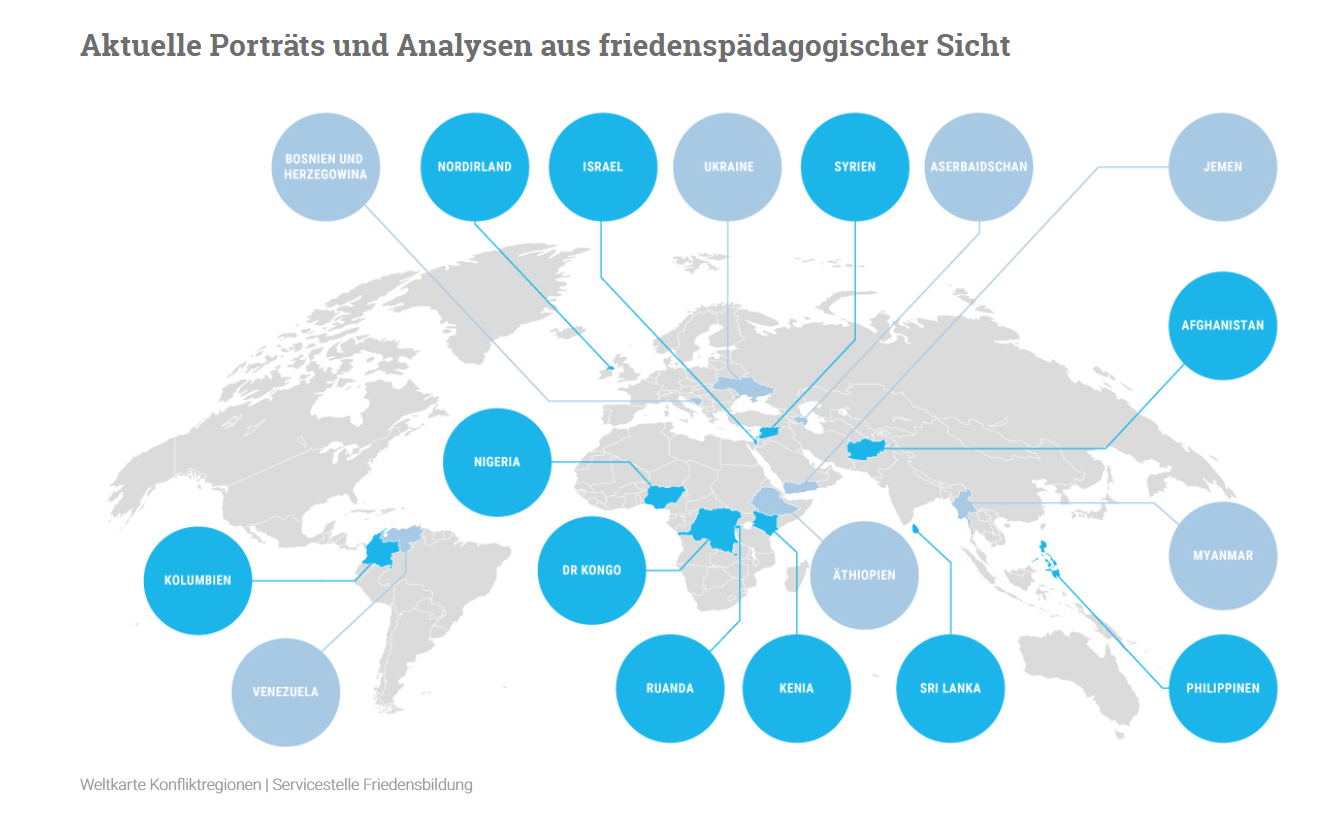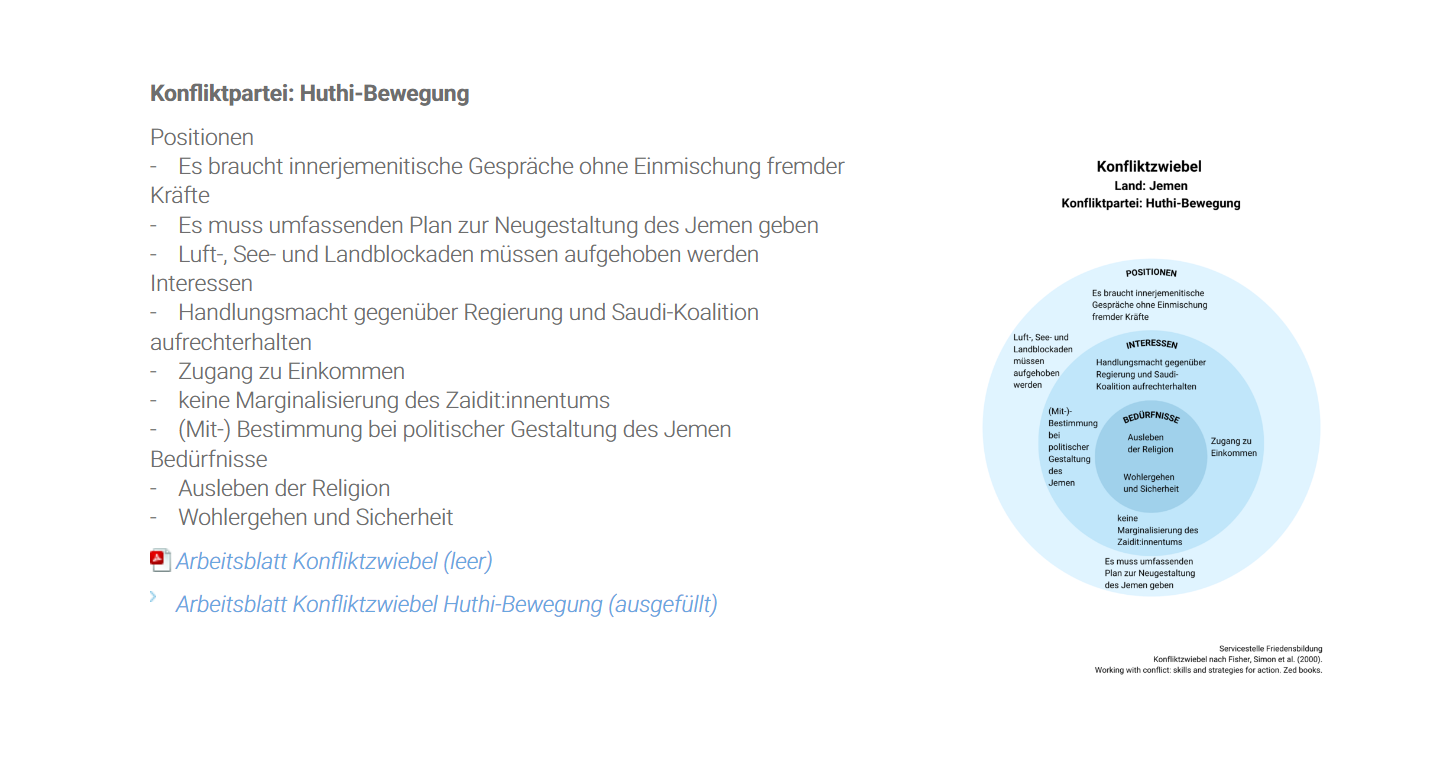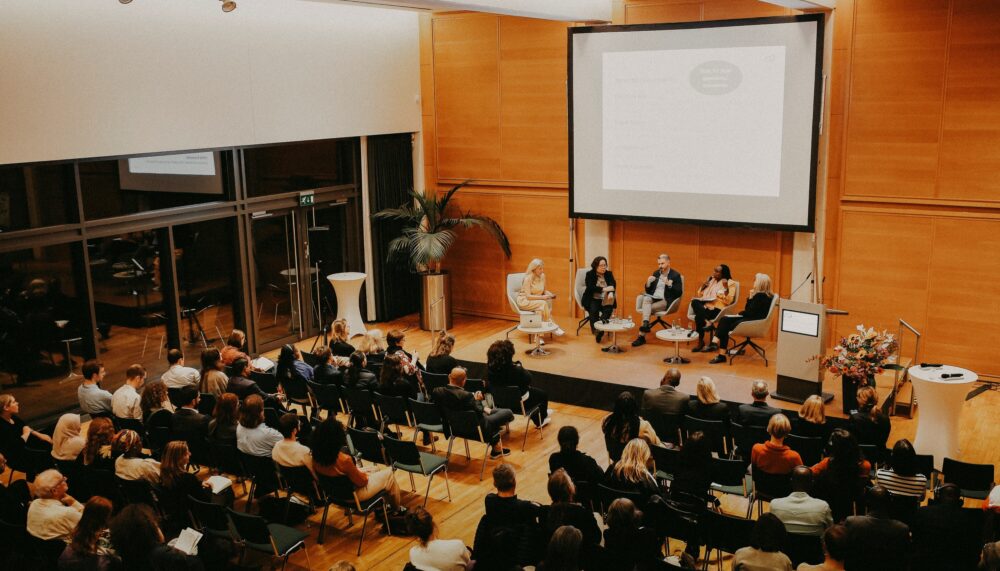FEATURE | 17 Jul 2023
Conflict analyses for teaching in German schools
Students learn what is happening in Ukraine or Sudan

We help teachers develop lessons that tackle solutions to violent conflict.
When students approach teachers with questions about the war in Ukraine, Afghanistan or Syria, a short "That's complicated!” is not enough. Even at an early age, pupils want to know what armed conflicts are about and what kind of peace initiatives exist. Teachers can now draw on a wide range of tools that cover this topic. The Service Agency for Peace Education, which is supported by the Berghof Foundation, the State Agency for Civic Education, and the Ministry of Education of Baden-Württemberg, has published conflict analyses on 18 countries (in German, some materials are available in other languages) and is continuously working to expand their collection of materials.
The potential of the cooperation between conflict research, practical peacebuilding work and peace education became particularly clear in this collaboration.
Anne Kruck, Advisor for Peace Education Approaches
At the core of this initiative is the question of how to convey comprehensive knowledge about conflict in an accessible way. Students want to understand what is at stake in the individual countries, who is involved, and what peace efforts are already in place. The demand has become increasingly evident since the start of the war in Ukraine. This gave rise to the idea of making use of models and explanatory approaches rooted in practical peace work and conflict research and applying them to educational materials that help understand the various conflicts.
Students of peace and conflict research have developed the materials according to a scheme initiated by the Service Agency. The Berghof Foundation's country experts then contributed their feedback. "The potential of the cooperation between conflict research, practical peacebuilding work and peace education became particularly clear in this collaboration," says Anne Kruck, who supervises the project on behalf of the Berghof Foundation. "The outcome is scientifically sound, enriched with regional expertise and practical experience, and at the same time comprehensible for students."
In addition, parts of the material were written in easy and simple language to cater to different levels of competencies. Several conflict analyses have also been translated into English, French and Spanish for foreign language teaching.
The aim of the materials is for students to strengthen their analytical skills. In addition to the conflict analyses themselves, there are also suggestions for how different grades can further engage. Younger pupils learn to read conflict analyses. They work out the cause and effects of armed conflicts with the help of the ‘conflict tree model’; intermediate students analyse the positions, interests and needs of conflict parties; and at the highest grades, they learn how to create conflict analyses themselves.
Another incentive of the programme is to introduce students to a range of conflicts worldwide. This helps them to develop a greater awareness of "forgotten crisis regions", enabling students to make their own judgements on news media. Furthermore, the case studies should make visible to students where international and local peace efforts are already taking place and shed light on where efforts are still necessary.
The ability to analyse a violent conflict is established in Baden-Württemberg’s curriculum for grade 10. Hence, the material on conflict analysis can be used by teachers in class. As one teacher emphasised in the evaluation of a teacher training course: "The topics, the links and hints, the overview and solution sheets, the background information, ... all this was wonderful!"
Our conflict analysis materials are in great demand. The number of users on our website has increased tenfold since their publication.
Dr. Julia Hagen, Head of the Service Agency for Peace Education
The page impressions also show how well the material is received: "Our conflict analysis materials are in great demand. The number of users on our website has increased tenfold since their publication," says Dr Julia Hagen, Head of the Service Agency for Peace Education. "This motivates us to gradually expand and update our pool of materials." Currently, a learning poster and an explanatory video are in creation, which illustrate the various steps of a conflict analysis. In addition, educational materials are continuously being added, such as analyses of the conflicts in Sudan or Iran.
All materials can be found on the website of the Service Agency for Peace Education.
Media contact
You can reach the press team at:
+49 (0) 177 7052758
email hidden; JavaScript is required









